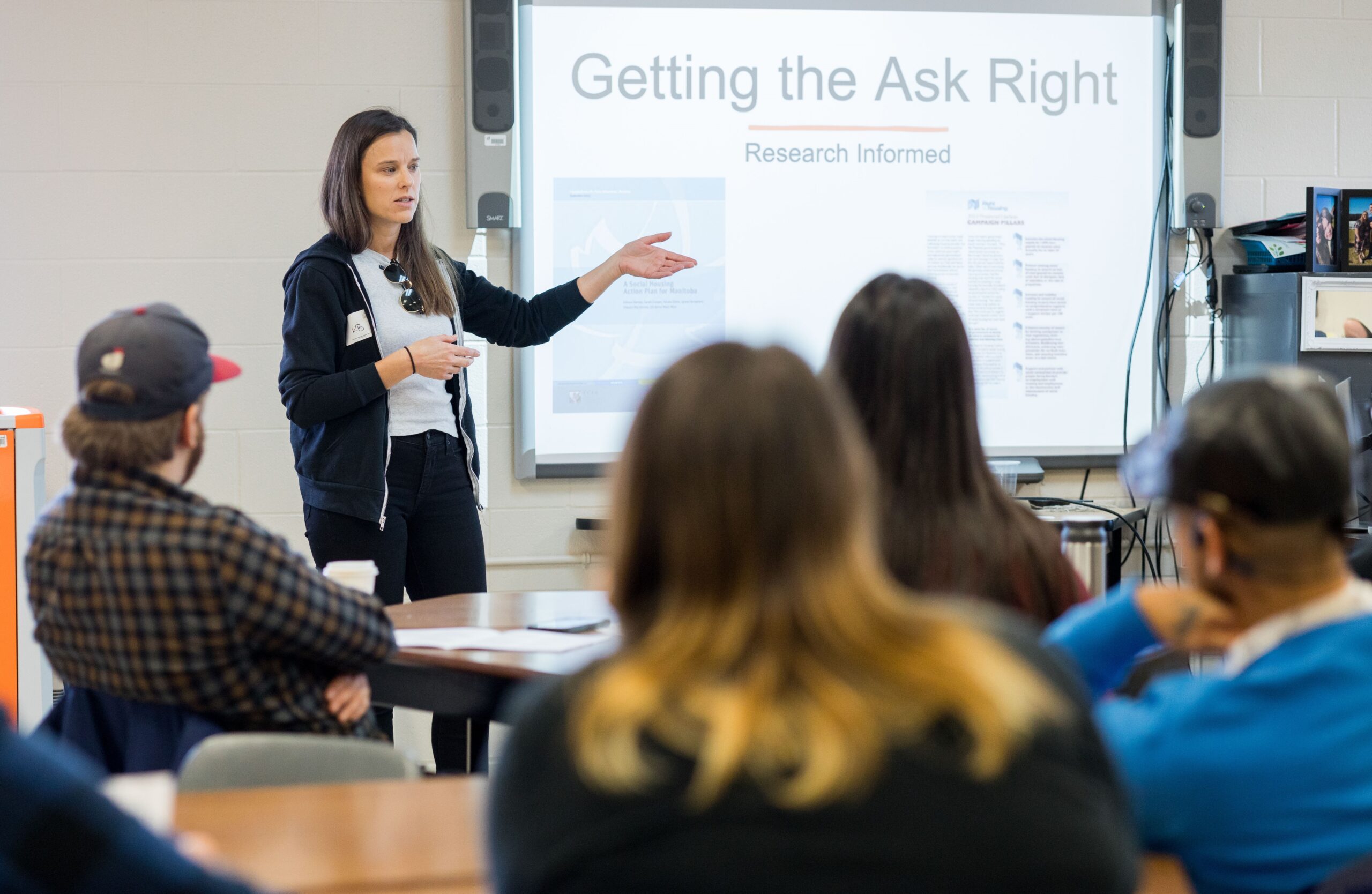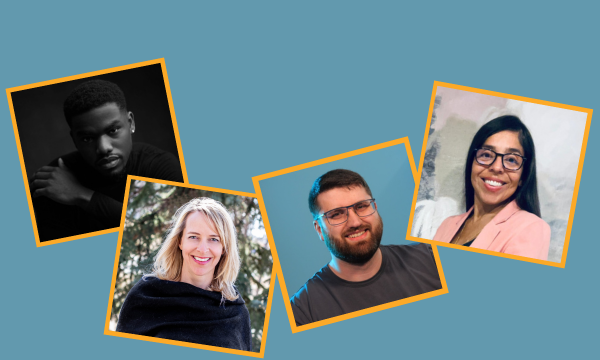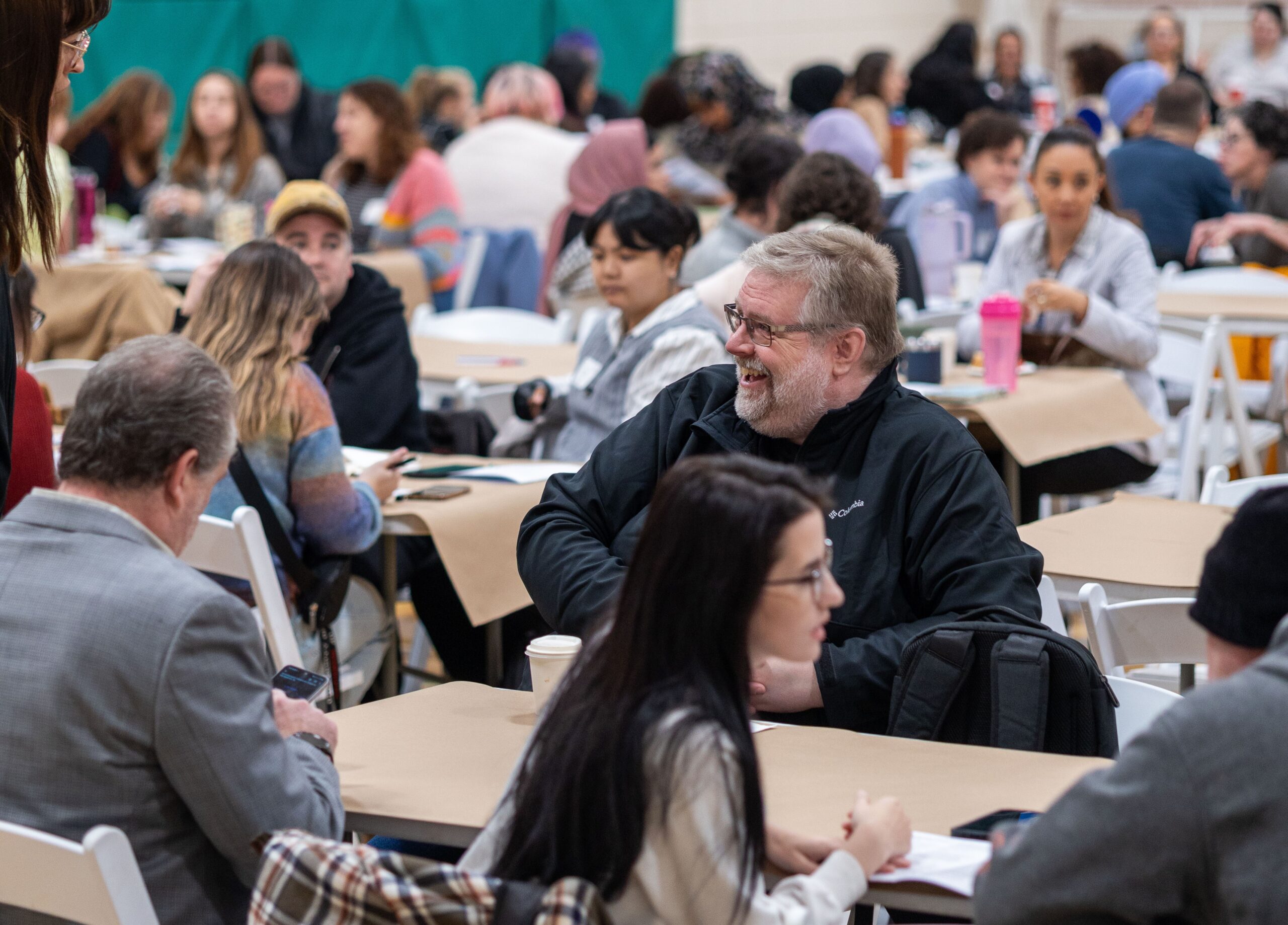Brendan Reimer has been involved in some form of social enterprise activity, though it wasn’t necessarily called this, for about 20 years. Brendan, current Regional Director of the Canadian Community Economic Development Network, also spearheaded the launch of Enterprising Non-profits (ENP) Manitoba, about two years ago.
 As Brendan moves on from both those roles to join the Assiniboine Credit Union later this month, the ENP-CA news service caught up with him to discuss some of his insights on Canada’s social enterprise ecology over the time of his engagement: its state when he joined, the present crossroads and what gives him the most hope for the future.
As Brendan moves on from both those roles to join the Assiniboine Credit Union later this month, the ENP-CA news service caught up with him to discuss some of his insights on Canada’s social enterprise ecology over the time of his engagement: its state when he joined, the present crossroads and what gives him the most hope for the future.
This is an edited and condensed version of the conversation.
How would you describe the state of the social enterprise scene when you became involved? What’s the difference today?
Twenty years ago, nobody in Canada was using the language of social enterprise. Or, if they were, it was in very select small pockets.
Mostly, people called them non-profits, maybe community enterprises.
And so, as much as we talk about vagueness in definitions or endless debates on definition, 20 years ago there was no debate because there was no terminology around this.
And while certainly there were those who were doing it, such as Ten Thousand Villages or Goodwill, nobody was seeing those enterprises as a sector.
But today, we do have the terminology, we do have an analysis of what social enterprises are and their value. We do have an emerging sense that this is a sector as opposed to just a bunch of random businesses that happen to be non-profits.
As for the growth of the acknowledgement and support of the sector by government, it isn’t that government didn’t support these kinds of organizations previously. Ones that employ people with intellectual disabilities, for example, have been around for many years and have always had provincial support.
There has been government involvement for a long time with non-profit daycares and non-profit housing in the social economy enterprise kind of categories.
Social enterprise in the arts and culture world has also had government support of different kinds for many years.
What’s different now is the increasing government support for the social enterprise sector as an industry in itself.
What was the state of ENP when you got involved and what strikes you about the contrast today?
When I got first involved, we kept hearing about the good work happening through ENP in B.C., both in terms of promoting the model and providing people some of the education about how to go about exploring the model so that it’s done right and not just jumped into blindly.
ENP B.C. was also providing some resources to do, for instance, feasibility studies that nobody else really funds.
We kept hearing about this over the years. But now to see an emerging federation with ENP models across the country is very different than it was even three to four years ago.
That’s really exciting for a number of reasons.
One is to see the model that’s been refined and honed to be the best it can be over 10 years and over hundreds of presentations now being drawn on to implement for success in other parts of Canada.
And then, with the federation model, it’s great to see that people won’t be operating in isolation.
Not only will they be relying on lessons learned from the past, but they will now be able to, in real time, draw on lessons learned from each other. And while each region is a bit different, it will be a whole collection of people working on a very similar model in different parts of Canada. There can be a solidarity and sharing of resources or tools. Whether it’s addressing evaluation or methodology or tackling new questions and challenges, we can share insights with each other, so not everybody is having to trail-blaze on their own.
As you move on to other work, how would you sum up the single most important “gift” your time in this sector and with ENP has given you?
What touches me the most, always, are the human impact stories, to see how people’s lives are changed.
Where I’ve seen that with the greatest kind of impact is through the social enterprises that are providing training and employment for people that no one else is going to hire. The gratitude and the legacy that is created in these folks when they are given a chance is absolutely profound.
I don’t know how many times I’ve heard people tell their story about how they’ve come to a place where absolutely no one will hire them, no matter how hard they try. And then finally this social enterprise gives them a chance and now they are eternally grateful.
The impact is not only in terms of a career path or income, but in generating a different worldview. So many times I’ve seen people’s worldview change to one of wanting to give back, both to reach out and create opportunities for others, but also to just more broadly give back to the community.
I’ve especially seen this in people who have been involved with gangs and the justice system. They know they’ve spent a lot of their lives taking from community and they’re used to getting the message that they are not valued. And then when someone believes in them, when someone says, “you are a very important human being, you do have value, you have great potential,” that triggers something in people that is quite profound. They start to look at people, at the world in a different way and want to contribute and to treat others the way they’ve just been treated.
Seeing all of this both grounds me in terms of why this work matters so much and fuels my fire to make sure that more of this happens.
That’s a gift that will stick with me for a long time.
What’s the crossroads the social enterprise sector faces today, from your perspective?
For years the work has been about trying to get people’s attention with the concept and with the stories. It’s been about hoping that somebody somewhere will listen and understand and get excited about it.
And while there is still a lot of work to be done there for sure, at this point it’s more about managing growth. By growth I mean the growth of intention.
There are so many ways that social enterprises can be misunderstood, misinterpreted and expectations can be completely inappropriate for what they can do.
For example, there could be government or funders who see this as the magic answer that now absolves them of funding non-profits.
Or there could be non-profits who see that this is now the magic way to have core funding forever, without having to rely on outside funders telling you what to do.
Even the private sector could be thinking ideologically — they may not want government to do a lot of programming, which requires taxation, and so they see this as the privatization of solving complex issues like poverty.
Clearly those are all views that are unrealistic, and so managing some of those expectations is going to be really important.
At the same time, there is huge potential for scale. We have a number of social enterprises here that do maintenance work for Manitoba Housing, for example — about eight or nine million dollars of it a year. Manitoba Housing spends about $130 million a year on maintenance. So just in that one tiny segment of our economy, there is enormous potential for growth still.
And, of course we have thousands of people who want to work, who right now have barriers to employment.
So the potential for growth is enormous — and possible. We just need to ensure we have those reality checks, to make sure that it’s done well and done for the right reasons.
What do you see that gives you the most hope for the future of the social enterprise ecosystem in Canada?
For one, the impact on the human being that comes through the social enterprises always gives me hope, whether it’s one person or a thousand.
That’s the reason to do it. And never mind just that person. That person has relatives, acquaintances, and so the ripples of this goes well beyond the people directly employed in social enterprises.
The understanding that more and more government people and private sector leaders and non-profits are all looking at this (hopefully with a realistic vision) also gives me hope. And that could be on the employment side, or in rural communities that are seeing certain services disappear and looking to social enterprises as a way to regain those.
There is huge interest and there is a lot of potential, and there is growing awareness of how to use this model to create better quality of life in communities, and so that gives me a lot of hope.
Here in Winnipeg, as an example, the Chamber of Commerce has put together a policy platform for our upcoming municipal election. It has decided that one of the pillars of the economic strategy will be intentional growth of social enterprises through a municipal procurement policy.
That’s the first time I’ve heard of a chamber of commerce be that aggressive in articulating the importance of the social enterprise sector to the city’s quality of life and the city’s business community.
We’ve also been working here with the City of Winnipeg Police, who are really excited about the potential of getting the city to shift the way it spends its money to social enterprises so that they will have less crime in the community to react to. So they see it as an effective crime prevention strategy.
As a third example, we’re working with one of Canada’s largest construction companies. In their Winnipeg office here, they are really excited about the potential to subcontract a lot of their construction work to social enterprises as well, because it’s the right thing to do and because of the community impact it will have.
So to see these different areas of percolating excitement gives me a lot of hope because I think those kinds of conversations and that kind of connection can be made with those same types of groups in other parts of Canada and other sectors as well.
This article was originally posted by www.socialenterprisecanada.ca on August 6, 2014 and appears here with permission.
Michelle Strutzenberger brings more than 10 years of experience in writing, social media, curation and digital distribution. Subject areas of interest include creating abundant or deep communities, social-mission business, education that strengthens kids’ sense of hope and possibility and journalism that helps society create its preferred future. She is currently supporting the development of Axiom News podcasts. Contact Michelle at michelle at axiomnews.com.





